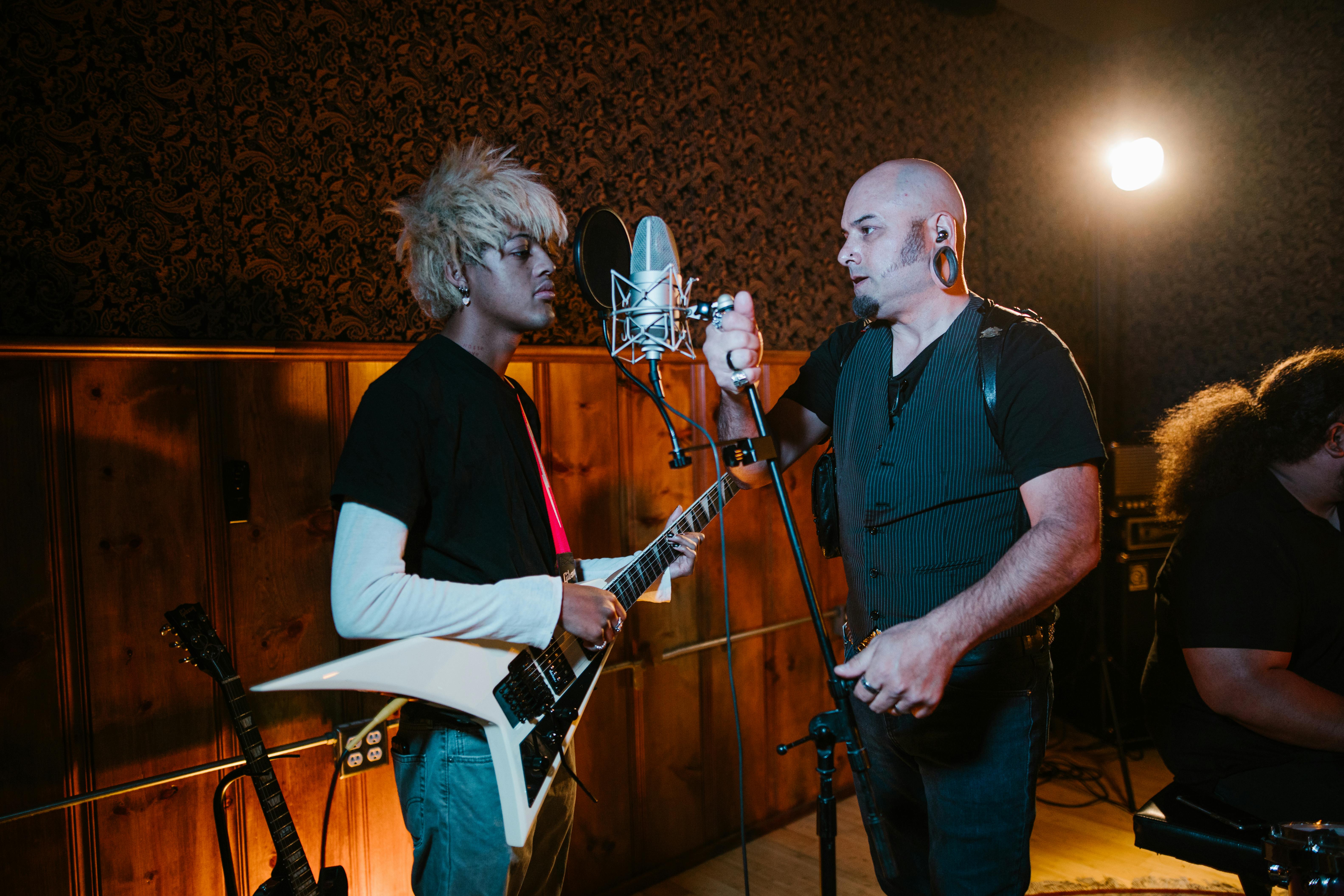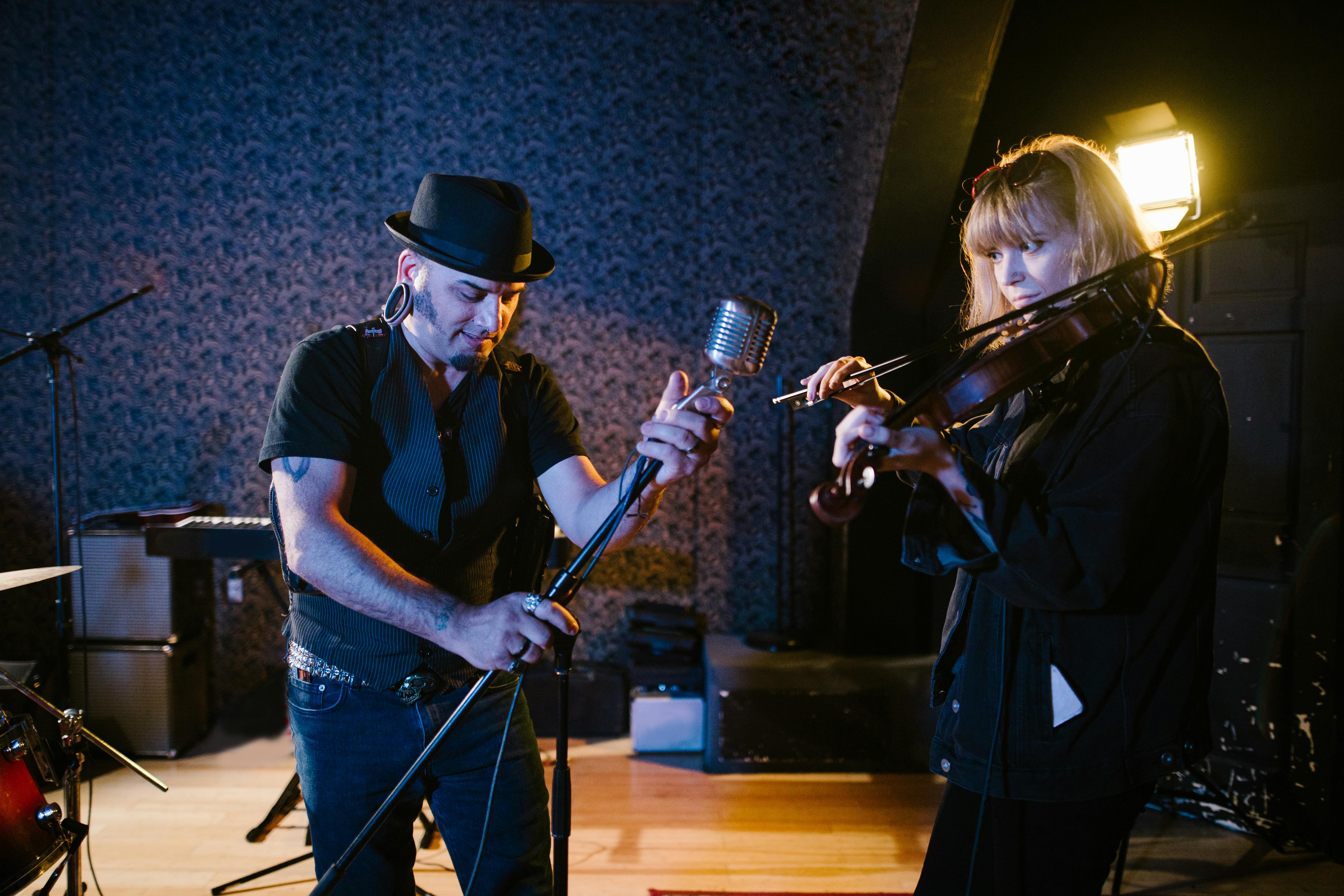In the world of live sound, one question often arises: what is the most commonly used microphone transducer type? Whether you’re hosting a podcast, conducting a podcast interview, or simply editing a podcast, understanding the different types of microphones is crucial. As you delve into the world of live sound, you’ll discover various microphone transducer types, each with its own unique characteristics and applications. By exploring these options, you can choose the best microphone for your specific needs, ensuring that your podcast or live event captures clear and professional-quality audio.
Understanding the Concept of Transducer Types in Microphones
Definition and Importance of Transducer Types in Microphones
The concept of transducer types in microphones refers to the different mechanisms by which microphones convert sound waves into electrical signals. A transducer is essentially the heart of a microphone, responsible for capturing sound and transforming it into a usable form.
Transducer types play a crucial role in determining the quality and characteristics of the audio recorded by a microphone. Different transducer types have their unique strengths and weaknesses, making them suitable for specific applications. By understanding the different transducer types, you can choose the microphone that best suits your needs and delivers the desired sound quality.
Different Varieties of Transducer Types
There are several transducer types commonly used in microphones, including dynamic, condenser, and ribbon transducers. Each type utilizes different technological principles to capture sound, resulting in distinct audio characteristics.
dynamic microphones use a diaphragm and a coil attached to it that moves within a magnetic field, generating an electrical signal. Condenser microphones, on the other hand, rely on a diaphragm and a charged plate to produce the electrical signal. Ribbon microphones employ a thin metal ribbon that vibrates within a magnetic field, creating the electrical output.
Most often used Microphone Transducer Type in Live Sound
Comparison of Commonly Used Transducer Types in Live Sound
When it comes to live sound, where durability, versatility, and ease of use are crucial, dynamic microphones stand out as the most commonly used transducer type. Dynamic microphones are designed to withstand high sound pressure levels, making them ideal for capturing sound in live performances and events.
Condenser microphones, while highly sensitive and capable of capturing fine details, are more delicate and require phantom power, making them less suitable for live sound applications. Ribbon microphones, while offering a warm and vintage sound, are also more fragile compared to dynamic microphones and require careful handling.
The Superiority of the Dynamic Microphone Transducer in Live Sound
Dynamic microphone transducers have earned their reputation as the go-to choice for live sound due to several factors. Firstly, dynamic microphones are highly durable and can withstand the rigors of live performances, including being dropped, subjected to rough handling, and exposure to high sound pressure levels.
Furthermore, dynamic microphones are generally more affordable compared to condenser and ribbon microphones, making them accessible to a wider range of users. They also have a natural ability to reject unwanted background noise and handle high volumes without distortion, ensuring clear and intelligible audio in live sound settings.

Characteristics of Dynamic Microphone Transducer
Identifying Features of Dynamic Microphone Transducers
Dynamic microphone transducers have distinct identifying features that set them apart from other transducer types. One key feature of dynamic microphones is their rugged construction, typically featuring a solid metal body and a robust grille that protects the internal components.
Dynamic microphones also have a relatively simple design, consisting of a diaphragm attached to a coil that moves within a magnetic field. This design allows dynamic microphones to produce a strong and robust signal, making them ideal for capturing loud sound sources without distortion.
The Robust and Durable Nature of Dynamic Microphone Transducers
One of the standout characteristics of dynamic microphone transducers is their durability. Due to their solid construction and resilient components, dynamic microphones can withstand rough handling, drops, and exposure to adverse conditions such as extreme temperatures and humidity.
This durability makes dynamic microphones well-suited for live sound applications, where they may be subjected to demanding conditions and frequent transportation. Additionally, the robust nature of dynamic microphones means they can handle high sound pressure levels without damage, making them a reliable choice for capturing loud performances without compromising audio quality.
Popular Models of Dynamic Microphone Transducers
List of Renowned Dynamic Microphone Brands
Several renowned brands specialize in developing high-quality dynamic microphones that are widely used by professionals in various industries. Some of the most trusted and popular brands include Shure, Sennheiser, Audio-Technica, AKG, and Electro-Voice.
Exploring Popular Models and Their Unique Features
Within these brands, numerous popular models of dynamic microphones have gained recognition for their exceptional performance and unique features. For example, the Shure SM58 is a legendary dynamic microphone known for its durability, excellent vocal reproduction, and effective noise rejection.
The Sennheiser MD 421 II is another popular dynamic microphone that offers versatility, with its ability to handle high sound pressure levels and capture both vocals and instruments with exceptional clarity. The Audio-Technica AT2020 is a widely used dynamic microphone for studio recording, thanks to its smooth frequency response and robust construction.

Professional Usage of Dynamic Microphone Transducer in Live Sound
Why Live Sound Professionals Prefer Dynamic Microphones
Live sound professionals have long favored dynamic microphones for various reasons. One primary reason is their durability, as they can withstand the demanding conditions and rough handling often encountered in live sound environments. Their ability to handle high sound pressure levels without distortion is another crucial factor that makes them popular among professionals.
Dynamic microphones are also preferred for their reliability in rejecting unwanted background noise, ensuring clear and focused sound reproduction, particularly in live performances where ambient noise can be a challenge. Additionally, their affordability compared to other microphone types makes them a practical choice for professionals working on a tight budget.
Examples of Events or Situations Where Dynamic Microphone Transducers are Used
Dynamic microphones find application in a wide range of live sound scenarios. They are commonly used in concerts, music festivals, and other large-scale live performances, where the ability to withstand high volumes and handle loud sound sources is essential.
Dynamic microphones are also popular in public speaking engagements, conferences, and corporate events, where clear speech reproduction is crucial. They are frequently employed in broadcast situations, such as television and radio interviews, due to their robustness and the ability to capture vocals accurately.
Comparisons to Other Microphone Types
Dynamic vs. Condenser Microphones
When comparing dynamic microphones to condenser microphones, it’s essential to consider their differing characteristics and specific applications. Dynamic microphones excel in live sound situations due to their durability, ability to handle high sound pressure levels, and natural noise rejection. They are the preferred choice for on-stage performances, outdoor events, and environments with high ambient noise.
Condenser microphones, on the other hand, are highly sensitive and capable of capturing fine details and nuances in sound. They require phantom power and are often used in controlled studio environments or for capturing vocals in quiet settings. While condenser microphones offer exceptional audio quality, they lack the ruggedness and durability of dynamic microphones.
Dynamic vs. Ribbon Microphones
Another useful comparison is between dynamic microphones and ribbon microphones. Both are known for their ability to handle high sound pressure levels, but they differ in terms of sonic characteristics and construction.
Dynamic microphones are often chosen for their durability and versatility in live sound situations, as they provide a balanced sound reproduction and can handle a wide range of sound sources. Ribbon microphones, on the other hand, have a unique warm and vintage sound but are more fragile and require delicate handling. They are preferred for recording vocals, string instruments, and capturing nuanced details in controlled studio environments.

Usage of Dynamic Microphone Transducer in Podcasting
The Role of Dynamic Microphones in Podcast Recording
Dynamic microphones play a vital role in podcast recording, primarily due to their ability to reject ambient noise and provide clean sound reproduction. In podcasting, where hosts and guests engage in conversations, it is essential to capture clear and intelligible audio without picking up unnecessary background noise.
Dynamic microphones allow podcasters to achieve this by focusing on the sound source while minimizing unwanted environmental sounds. They are particularly beneficial in recording setups where there may be limited control over the acoustic environment or where multiple people are speaking simultaneously.
Why Podcasters Choose Dynamic Microphones Over Other Types
Podcasters often opt for dynamic microphones for their practicality and reliability. Dynamic microphones are known for their durability and resistance to handling noise, making them suitable for podcasting setups where hosts and guests may move or handle the microphone during recordings.
Additionally, dynamic microphones offer an excellent balance between sound quality and affordability, making them accessible to podcasters of all levels. They provide a warm and natural sound representation, capturing vocals with clarity while minimizing unwanted background noise.
Maintenance and Care for Dynamic Microphones
Guidelines for Properly Maintaining a Dynamic Microphone
To ensure the longevity and optimal performance of a dynamic microphone, proper maintenance and care are essential. Here are some guidelines to follow:
-
Keep the microphone clean: Regularly wipe the microphone with a soft, lint-free cloth to remove any dust or debris. Be cautious not to apply excessive pressure or use abrasive cleaners that could damage the microphone’s finish.
-
Protect the microphone from moisture: Avoid exposing the microphone to excessive humidity or liquids. When not in use, store the microphone in a dry environment to prevent moisture buildup.
-
Use a windscreen or pop filter: If using the microphone outdoors or in situations where wind or plosive sounds are likely, consider using a windscreen or pop filter. These accessories help reduce unwanted noise and protect the microphone from moisture.
-
Handle the microphone with care: Avoid dropping or mishandling the microphone, as this can cause internal damage and affect its performance. When transporting the microphone, use a protective case or pouch to prevent any accidental impact.
Common Issues and Their Solutions
While dynamic microphones are known for their durability, they can still encounter common issues that may affect their performance. Here are some common problems and their solutions:
-
Handling noise: If the microphone is picking up unwanted handling noise, use a shock mount or microphone stand with shock absorption to isolate it from vibrations.
-
Popping sounds: When recording vocals, the microphone may pick up plosive sounds caused by strong puffs of air. Using a pop filter can mitigate these pops and ensure clearer sound reproduction.
-
Connectivity issues: If the microphone is not producing sound or has intermittent connection problems, check the cables and connectors for any damage or loose connections. Replace or repair any faulty components as necessary.
Prevention of Potential Damages
To prevent potential damages to dynamic microphones, it is essential to follow some preventive measures:
-
Avoid exposing the microphone to extreme temperatures or direct sunlight, as this can damage the internal components and affect its performance.
-
When using the microphone on a stand or boom arm, ensure it is securely fastened to prevent accidental falls or damage.
-
When connecting the microphone to audio equipment or recording interfaces, handle the connections gently and avoid excessive force that could damage the connectors.

The Future of Dynamic Microphone Transducers in Live Sound
Latest Developments in Dynamic Microphone Technology
Although dynamic microphone technology has been around for decades, manufacturers continue to innovate and improve upon its design and performance. Some of the latest developments in dynamic microphone technology include advancements in diaphragm materials, improved noise rejection, and enhanced frequency response.
Manufacturers are also exploring wireless dynamic microphone systems to provide more flexibility and mobility in live sound applications. These wireless systems offer reliable transmission and high-quality audio capture, further expanding the capabilities of dynamic microphones in live performances.
The Impact of Advancements on Live Sound
The advancements in dynamic microphone technology have a significant impact on the live sound industry. These developments allow sound engineers and performers to achieve higher levels of audio fidelity, improved noise rejection, and increased durability.
With the incorporation of wireless technology, dynamic microphones offer more freedom and flexibility on stage without compromising audio quality. Furthermore, the continued refinement of dynamic microphones makes them more accessible and cost-effective for a broader range of users, ensuring that high-quality sound reproduction remains achievable in live sound environments.
Concluding Remarks and Expert Opinion
Why Dynamic Microphone Transducers Still Remain a Reliable Choice
Dynamic microphone transducers continue to be a popular and reliable choice for professionals in live sound and podcasting due to their durability, versatility, and affordability. Their ability to withstand rough handling, high sound pressure levels, and reject unwanted noise makes them a practical and dependable option in various scenarios.
Dynamic microphones have stood the test of time and will likely remain a staple in the audio industry due to their consistent performance and widespread use. Professionals and enthusiasts can rely on dynamic microphones for their consistent sound quality, ease of use, and ability to capture clear and intelligible audio.
Expert’s Prediction for Future Trends in Microphone Transducer Usage for Live Sound
Experts predict that dynamic microphones will continue to dominate the live sound industry for years to come. As technology advances, dynamic microphones are expected to incorporate more wireless capabilities, allowing for greater freedom of movement on stage without sacrificing sound quality.
Additionally, advancements in materials and design will further enhance the durability and sound reproduction capabilities of dynamic microphones. This will ensure that performers and sound engineers can rely on dynamic microphones to deliver high-quality audio in live sound settings, providing an immersive experience for audiences worldwide.
